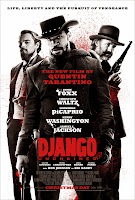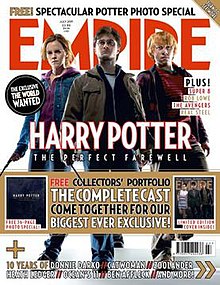Audience Theroies:
Cultivation
|
As audiences watch more and more film and television, they gradually develop certain views about the world, some of which are ‘false’.
|

A good example of this theory is the Jim Carrey film 'The Truman Show', it revolves around Carrey's character,Truman, as he discovers his life has been filmed and planned since he was born. This is a good example as the audience can see how he doubts the world he is involved in which includes the auidence's involvement within their own life and they can begin to question 'false' views.
Another example of this can be the HBO series 'The Sopranos' as it shows the daily life of mob boss Tony Soprano, his views are tested each episode morally and ethically which refelects real events that could happen, the audience can then connect with Tony as they can feel his struggle and therefore understand what he is feeling and experiencing.
Desensitization
|
If we are exposed to too much violence, or too much blatant sexuality, we will become less sensitive to real life violence and sexual behaviours.
|

An example of desensitisation is Reservoir Dogs and most of Quentin Tarantino's work as it is filled with high levels of cartoon violence, with episodic chapters within the film to show it is just fiction. As the audience are exposed to the excessive violence they are therefore less sensitive towards violence in real life. A particular example for this theory is Tarantino's most recent film 'Django Unchained' as it involves events that have actually happened in history but is twisted with over the top violence and comedic devices to then desensitize the audience.
Copycat
|
This approach suggests that people will imitate what they see in the media – e.g. if young people watch Natural Born Killers, they will go out on a killing spree. This is not so much a ‘theory’ as an assumption perpetuated by the Press!
|

'Natural Born Killers' is a good example of this theory as it represents two people with abusive childhoods who go on a killing spree across America. What makes the film parallel with real life is how these killers are treated by the media, within the film they are almost glorified and treated as heroes for their killings which could lead to people wanting to imitate the actions depicted. But to believe the audience will carry out such actions insults their intelligence as they can differentiate between fiction and non-fiction.
Only in extreme cases can this theory be true with evidence such as the Colorado shootings at a showing of the 'Dark Knight Rises' as the gunman believed himself to be the Joker and his intentions were to kill Christian Bale who played Batman but he decided to target his local cinema instead.
Reception analysis
|
Audiences are seen as active producers of meaning, rather than as merely consumers of media meanings. They make sense of media texts according to their social position (in terms of their identity) – and their gender, race, class etc.
|
An example of this theory can be Nicolas Winding Refns 'Pusher' trilogy as I am talking from a personal viewpoint as I understood the text as a crime saga which involves three different people but their lives play out like a Shakespearian tragedy, I analysed within my own social class and assessed it against my own as the trilogy of films are Danish and myself being English, I made sense of the films using the above codes.
Uses and Gratifications
|
Instead of researching what the media do to the audience, this approach studies what the audience does with the media. This approach also takes account of people’s personalities and personal needs.
|

With this theory the audience will actively seek out their own chosen media text for personal gratification. An example of this is 'Memento' as the audience have to piece together the flashbacks with a man with no long term memory which lead the viewer back in time to better experience his life and overall goal. This is a good example as the audience have to be alert all the time to piece all the evidence and makes them active with the text instead of just watching to pass time.
Hypodermic Syringe
|
Just like the syringe used to inject a drug into a body, the media ‘injects’ messages directly into the minds of the viewers/listeners/readers; and they can be as addictive as heroin ...
|
The Hypodermic Syringe or Magic Bullet Theory is a model of which suggests an intended message within a media text is received and accepted directly by a receiver who is completely passive, almost as if they helpless and have to accept the message.
The "Magic Bullet" or "Hypodermic Needle Theory" of direct influence effects was not as widely accepted by scholars as many books on mass communication indicate. The magic bullet theory was not based on empirical findings from research but rather on assumptions of the time about human nature. People were assumed to be "uniformly controlled by their biologically based 'instincts' and that they react more or less uniformly to whatever 'stimuli' came along" (Lowery & De Fleur, 1995, p. 400). The "Magic Bullet" theory graphically assumes that the media's message is a bullet fired from the "media gun" into the viewer's "head" (Berger 1995). Similarly, the "Hypodermic Needle Model" uses the same idea of the "shooting" paradigm. It suggests that the media injects its messages straight into the passive audience (Croteau, Hoynes 1997). This passive audience is immediately affected by these messages. The public essentially cannot escape from the media's influence, and is therefore considered a "sitting duck" (Croteau, Hoynes 1997). Both models suggest that the public is vulnerable to the messages shot at them because of the limited communication tools and the studies of the media's effects on the masses at the time (Davis, Baron 1981). http://en.wikipedia.org/wiki/Hypodermic_needle_model

Although the theory is considered obsolete today a good example of this is the film 'Killing Them Softly' which revolves around Jackie Cogan (Brad Pitt) who is an enforcer hired to restore order after three wannabe criminals rob a protected Mob game which causes the local criminal economy to collapse. The reason this films fits the hypodermic needle model is that throughout the film it injects the message of the American economy and society breaking down and the viewer is helpless from escaping this message as with the cinematography messages such as election campaigns, posters, quotes are littered throughout, thus making the audience unable to forget.
Below I have included a power-point about the hypodermic needle model which I found helpful.
 The magazine I have chosen to print my film review in is Empire magazine. Empire is a British film magazine published monthly by Bauer Consumer Media.From the first issue in July 1989, the magazine was edited by Barry McIlheney and
published by Emap.Bauer purchased Emap Consumer Media in early 2008. It is the
biggest selling film magazine in the United Kingdom and is also published in the United States, Australia, Turkey, Russia and Portugal. Empire
organises the annual Empire Awards which were sponsored by Sony Ericsson , and from 2009 sponsored by Jameson. The awards are voted
for by readers of the magazine.
The magazine I have chosen to print my film review in is Empire magazine. Empire is a British film magazine published monthly by Bauer Consumer Media.From the first issue in July 1989, the magazine was edited by Barry McIlheney and
published by Emap.Bauer purchased Emap Consumer Media in early 2008. It is the
biggest selling film magazine in the United Kingdom and is also published in the United States, Australia, Turkey, Russia and Portugal. Empire
organises the annual Empire Awards which were sponsored by Sony Ericsson , and from 2009 sponsored by Jameson. The awards are voted
for by readers of the magazine.








